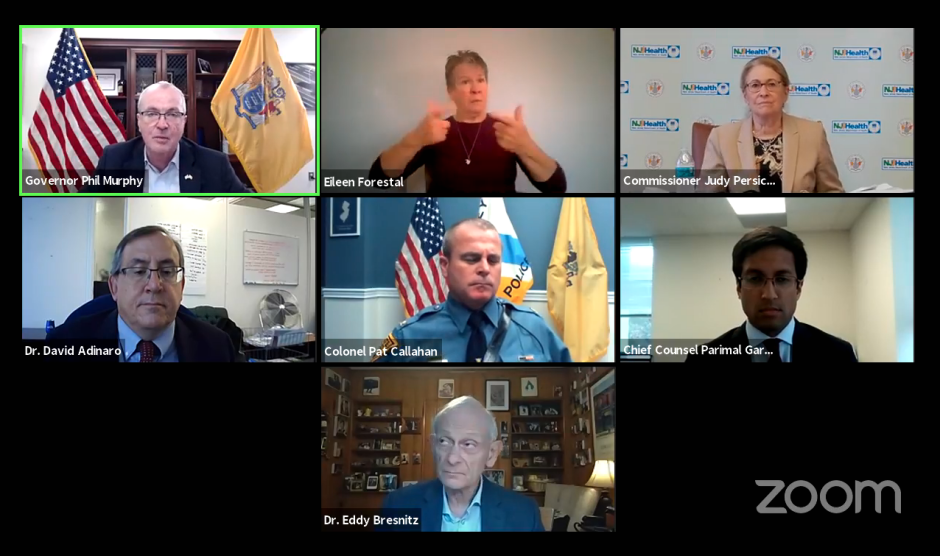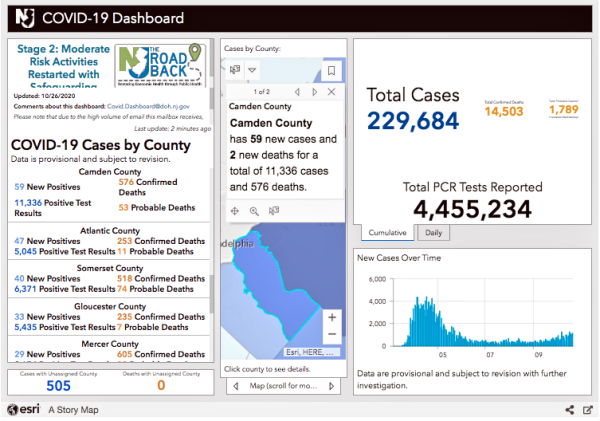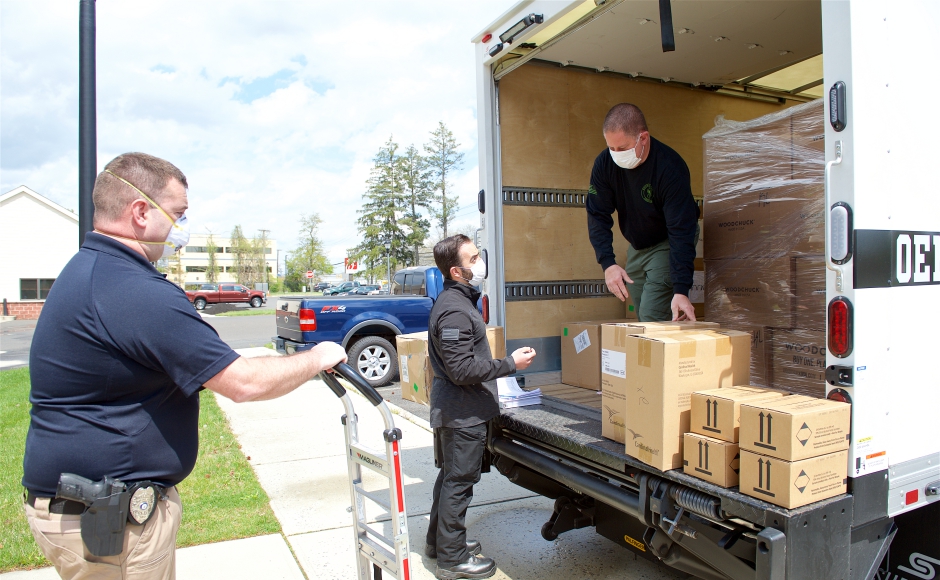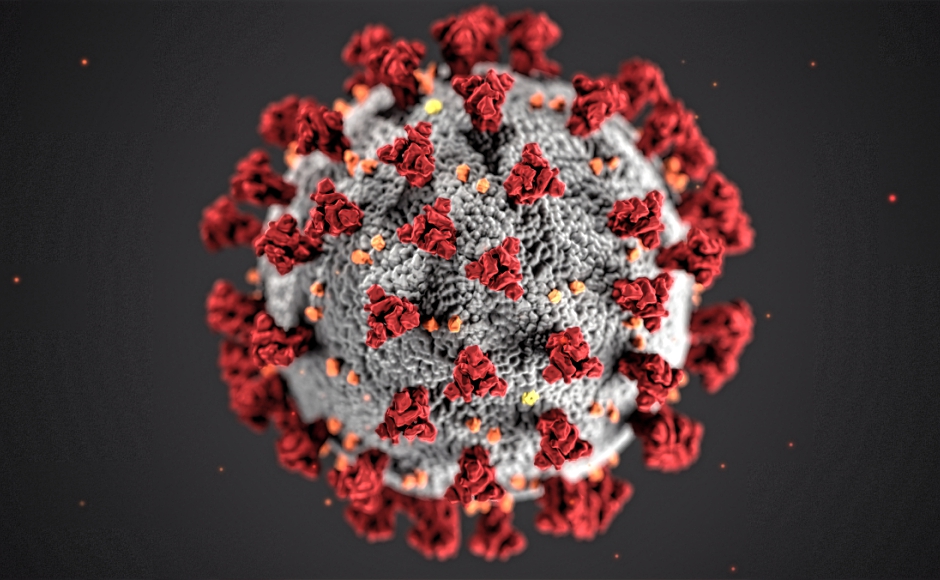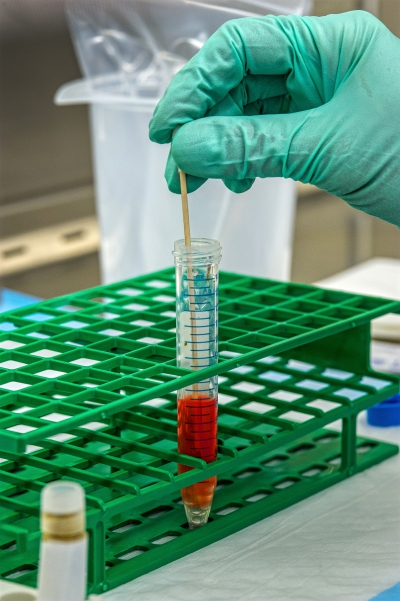New Jersey is seeing new infections on par with those during the spring months, when the virus was at its peak. Gov. Murphy blames personal behavior that’s beyond the reach of officials to regulate.
By Matt Skoufalos | October 26, 2020
Another 1,223 New Jersey residents have tested positive for novel coronavirus (COVID-19), bringing the statewide total to 229,684 cases, Governor Phil Murphy reported Monday.
Sadly, seven more residents have perished from complications related to the virus, bringing the statewide death toll to 14,503 lives lost during the pandemic.
In addition to those lab-confirmed fatalities, the state has acknowledged another 1,789 probable COVID-19-related deaths.
Since March, 424 of every 100,000 New Jersey residents have been hospitalized with COVID-19, and 165 of every 100,000 have died from COVID-19-related complications.
More than 4.45 million people have been tested for the virus statewide, with a 2.61-percent positivity rate per 100,000 residents.
Rate of transmission (Rt) at 1.17, spot positivity lower in South Jersey
The statewide average of COVID-19 spot positivity testing stood at 4.48 percent October 22; in South Jersey, it was slightly lower, at 4.36 percent.
Rt, the variable that describes the seven-day, rolling-average rate of transmission of new COVID-19 cases, hit 1.23 from samples taken October 24.
An Rt figure greater than 1.0 means that each new COVID-19 patient is infecting more than one other person, on average, and the spread of the virus is increasing.
Since its mid-April COVID-19 spike, the highest reported RT in New Jersey was 1.48, recorded August 1. The lowest was 0.62, recorded June 9.
Long-term care accounts for half of all deaths, 18 percent of those infected
The recent spikes in new COVID-19 patients has led to three-month highs in hospitalizations, to double month-ago levels, the governor reported Thursday.
Throughout New Jersey, 948 people currently are hospitalized with a suspected case of COVID-19.
Of those, 767 have tested positive for COVID-19, and 181 are awaiting confirmation of their symptoms.
Among those hospitalized patients, 178 are in intensive or critical care, and 75 of the ICU and critical-care patients (42 percent) are on ventilators.
Across the state, 793 long-term care (LTC) centers have reported at least one case of COVID-19, and 164 are dealing with an active outbreak. LTCs account for 39,555 infected patients and staff in New Jersey, or 17 percent of total cases.
That includes 25,547 residents and 14,008 staffers sickened by the virus, as well as 7,189 lab-confirmed resident and staff deaths (50 percent of the statewide total), with facilities self-reporting 121 staff deaths.
Of 656 veterans residing in a state-run home, 408 residents have tested positive for COVID-19, and 149 have died from complications related to the virus. Nine veterans presently are hospitalized with COVID-19, and 257 have recovered from the virus.
At state-run psychiatric facilities, 223 of 1,175 patients and 538 staff members have tested positive for COVID-19. Thirteen patients and seven staffers have died from complications related to the virus.
To date, 60 New Jersey children aged 1 to 18 have been diagnosed with pediatric multisystem inflammatory syndrome, New Jersey Health Commissioner Judy Persichilli said.
All those pediatric patients have tested positive for an active COVID-19 infection or the presence of COVID-19 antibodies, indicating exposure to the virus. No deaths have been associated with this syndrome in New Jersey, although several children have been hospitalized during their treatment.
Since August 1, 25 COVID-19 outbreaks encompassing 111 individual cases have been traced to schools in 13 New Jersey counties. In Camden County, three outbreaks have been linked to 33 cases.
‘Everywhere you look, it is screaming out that this is surging’
New positive COVID-19 cases continue to roll in across New Jersey, where the state is seeing numbers reminiscent of those last recorded in the spring.
“Everywhere you look, it is screaming out that this is surging,” Murphy said.
Officials attribute the relapse to “pandemic fatigue,” and the relaxation of safeguards among residents who are most likely gathering indoors and unmasked.
Nonetheless, the uptick in new infections won’t necessarily mean a reinstatement of state-issued restrictions seen during the peak of the pandemic, as these cases are believed to be originating “in private settings, which are beyond our ability to effectively regulate and/or enforce compliance,” the governor said.
“There are very few steps you can take other than pleading with people to do the right thing,” Murphy said. “That’s what we’re doing, that’s what we’ve been doing over the past month, and that’s what folks, to their enormous credit, have been doing.
“There is not a blunt-instrument, statewide step that we believe would chop these numbers down,” he said. “That remains on the table, but we do not believe those steps match the moment.”
The governor urged residents “to accept that it’s not normal this year, and to limit, limit, limit whatever gathering you want” as “the down payment on hopefully getting back to something normal next year.” Murphy urged residents to limit the capacity of activities, with “a strong preference that it’s with people in your own bubble.”
No vaccine yet, but NJ has a plan to distribute
Although a COVID-19 vaccine is presumably months away from being a reality, New Jersey has filed its plan to distribute inoculations with the U.S. Centers for Disease Control (CDC) 10 days ago.
Murphy described the plan as a work in progress that “has taken on greater urgency” with vaccines potentially months away.
The governor said the state will work to provide it “to those communities that are hardest hit, not just those that are easiest to reach.”
Those at highest risk of infection and those for whom early inoculation would have the greatest benefit will be first up to receive the vaccine.
New Jersey’s plan calls for an initial goal of vaccinating 70 percent of the state’s eligible adult population, a tall order given the likelihood of a limited initial supply of any vaccine developed. Furthermore, without supplemental funds, the governor said it could take years for the state to hit that 70 percent vaccination rate.
Even with a sufficient supply of vaccine and the capacity to cold-store and transport it, New Jersey would need to vaccinate 81,000 people per day, five days a week—that’s 32,000 per day in every county in the state—to hit that 70-percent mark. By comparison, Persichilli said, the seasonal flu vaccine, one of the most frequently administered in the state, is only received by half of New Jersey residents, and 70 percent of those are children.
The federal government is likely to provide a limited number of vaccine doses to states, and will likely provide guidance on how those limited quantities are to be used, but “how much New Jersey will receive will depend on factors such as the population of essential and healthcare workers, spread or prevalence of the disease, and the vaccine availability,” Persichilli said.
Plus, “one of the challenges we have is building public confidence in a safe and effective vaccine,” she said.
Contact tracing woes persist
New Jersey is now up to 1,906 contact tracers statewide, an average of 21 per 100,000 residents in each county. From October 10 to 17, they were able to follow up with more than two-thirds of cases, 55 percent of cases within 24 hours.
Yet those people contacted failed to provide follow-up information for tracers in 58 percent of cases, Murphy said. Some have offered to inform their personal contacts themselves, but that’s not as helpful, Persichilli said, because contact tracers can also offer connections to other social supports, from testing to safe quarantining, that private citizens cannot.
“This is not a witch hunt,” Murphy said. “Nobody has any concern other than protecting your health and your community’s health.”

